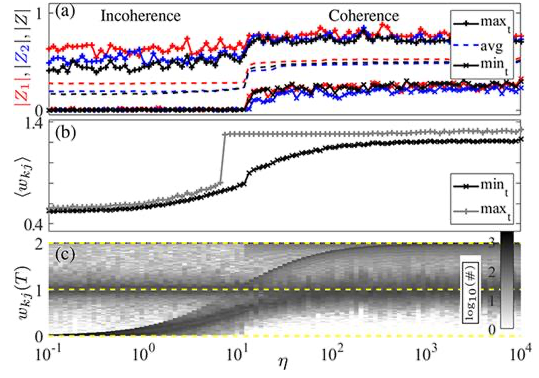New paper on dynamic connectivity in adaptive networks

A new paper by Christian Bick and Erik A. Martens, Roskilde University, Denmark, explores how complex systems like brains and communication networks change when connections adapt over time. The work reveals how adaptation constraints can reduce complexity stemming from network adaptation.
This allows, for example, to understand transition to collective behaviours such as synchronisation in adaptive networks. Many systems that govern crucial aspects of our lives can be seen as interacting dynamical units. This includes systems on a vast variety of scales, from billions of tiny interacting neural cells that are a critical part of our brain to the large-scale communication networks that keep our world running. While we may understand the behaviour of each dynamical unit, it is crucial to understand the emergent collective dynamics of all units together. Synchronisation is a prime example, where units behave in unison. Importantly, collective dynamics is related to function: For example, loss of brain synchrony is associated with neurological disease.
You can read more about the article in the accompanying press release.